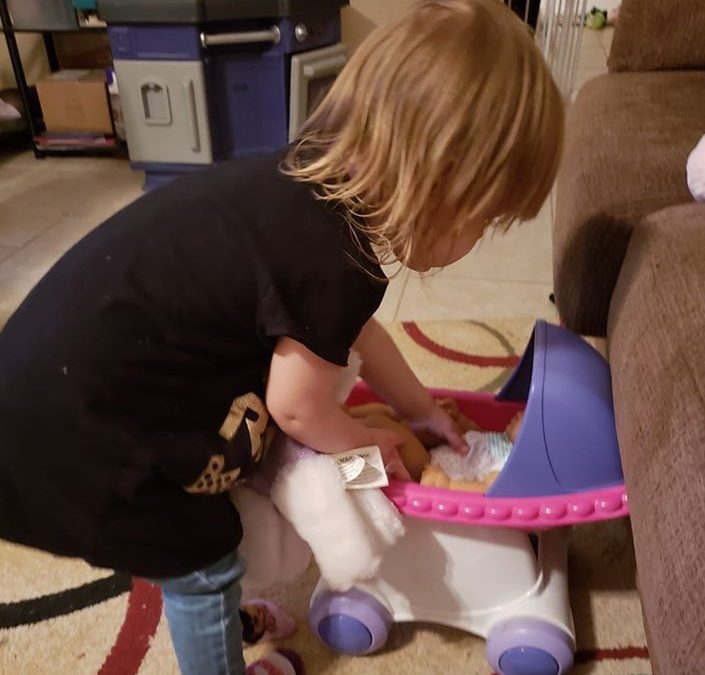Providing a safe home environment is important, and as a parent, you might always be conscious that there’s parts of your home that aren’t safe. Whether you’re about to become a parent for the first time or your children have started to explore the home, here are some tips to keep your children safe.
Keep Dangerous Objects Out Of Reach
Unbeknownst to you, there’s likely to be some things around the home that you wouldn’t immediately see as being dangerous but could well be. As your children are growing, they’re learning more about the world they live in, and from an early age, we get a lot of our awareness from parents and teachers. Knowing what’s dangerous to us, for example, is important so that we can be cautious around these things. Having any electrical near water as an example, sharp knives that might be on the age of the kitchen counter or chemical products in your cleaning cupboard. For children that are much younger and not aware, they will try and grab, drink or eat anything. So be extra cautious and try to keep anything that is deemed dangerous or you think could be dangerous, out of reach.
Cover All Of Your Plugs
With plug sockets, they can really be quite dangerous, even when there’s nothing plugged in them. And as far as little fingers go, they may go play with the plug sockets, and any water or connection with the electric could be deadly. So to avoid this and to have peace of mind that your home is safe, it’s a good idea to cover all of your plugs at the level your children are at. You can get these from most DIY stores and they are fairly cheap. The plug covers will seal the plug completely and will need an adult to remove them. So they are effectively child-proof unless your child has superhuman strength or long nails.
Add Soft Furnishings To Hard Floors
Soft furnishings are good for babies and toddlers who may not have the spacial awareness yet or the ability to stay standing steady for long. With a baby or toddler, any part of their body coming into contact with a hard surface can be damaging, and so you want to put protection in where possible. Any places around the home that may have wooden flooring try covering these areas with rugs or mats. That way, no matter how many times they fall over, they’re unlikely to cause any damage to themselves. When it comes to the crib, you want to check that you’re choosing the right crib mattress size. Put extra padding around the outside of the crib to avoid falls when trying to climb out on their own. I used a baby gate around my daughters bed when I first transitioned her from the crib to a toddler bed.


Soft rugs in front of the sofa to prevent accidental head injuries from jumping monkeys.
Keep Cables Tucked Away
Cables are choking hazards, and when some of them are live with electricity, they also become dangerous. Make sure all cables to everything are tucked away and out of sight. Tack any cables to the wall where possible and create protection around wires to ensure they’re nibble-proof. Remember, with blinds too to keep the cords high up and out of the way because they have been known in the past to cause strangulation in infants.
Put Child-Safety Gates On Staircases
When living in a property with staircases, a lot of these tend to be steep or high up, and therefore, you want to ensure that there’s safety precautions in place. You won’t need to think about putting these in until they’re toddlers. When you do, try to find gates that stay in place and don’t damage your walls or banisters. Ensure that they also don’t have to high of a bar at the bottom, that it causes a tripping hazard for both you and your child. Have these gates at both ends of the staircase so that they can be safe, no matter where they are in the home. You also don’t want to be opening and closing them when you have your children with you because then they might try to open them on their own. However, with the advancements in technology, there will likely be child gates that operate electronically and even coded.
Protect Sharp Corners
Sharp corners are everywhere in your home, so it’s good to be conscious of what’s going to be a hazard for young toddlers running around. Marble surfaces like a fireplace or coffee table can usually have sharp corners and so to protect this, it’s a good idea to put rubber ends on these to protect the sharp bit. That way, even if a child falls towards it, the damage might not be so bad in relation to what it could have been like. You might want to think of replacing certain furniture in the home just to be safe, but most of the time, there are precautions that you can put in place to ensure your child’s safety and yours in fact.
Learn CPR And First Aid
Being knowledgeable is powerful, and when it comes to your child’s health, it’s good to be in the know. Learning CPR and First Aid training is very useful to know, just in case you ever found yourself in a situation where your child or children have been injured. It’s beneficial to have some experience of being able to handle a situation and how to give aid to those who need in, while professional help is en route. You can learn CPR online and can do first aid training courses local to you for a small price. It’s certainly worth doing if you haven’t done it before.
Keeping your home environment safe is important because more accidents can happen in the home than anywhere else. And as children don’t have the same level of awareness as we do, it’s good to be able to put those precautions in place to help protect them from harm’s way. So put in those safety features around your home and get educated on first aid when you can.
















